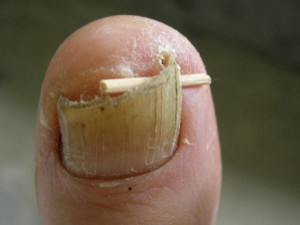 Did you know that 2%-18% of the world’s population has been affected by toenail fungus? Research has shown that 25% of the adult population is likely to suffer from toenail fungus before they attain the age of 40. It is more common than the finger nail fungus because fungi flourish in a dark and warm environment. According to a report released by a medical institution, 1 in 10 Canadians is affected by a chronic toe nail or finger nail fungus.
Did you know that 2%-18% of the world’s population has been affected by toenail fungus? Research has shown that 25% of the adult population is likely to suffer from toenail fungus before they attain the age of 40. It is more common than the finger nail fungus because fungi flourish in a dark and warm environment. According to a report released by a medical institution, 1 in 10 Canadians is affected by a chronic toe nail or finger nail fungus.
Risk Factors for Toenail Fungus
Research has indicated that the following factors are likely to increase your chances of contracting toe nail fungus.
- Age: According to a recent study, over 50% of the elderly population is likely to experience toenail fungus before they attain the age of 70. The study also found that 0.7% of reported toe nail fungus cases were found in patients under 19 years old. It indicated that 18.2% of the patients between the ages of 60-79 were affected by toenail fungus. The study proved that the probability of getting affected by toenail fungus increased with age
- Gender: Toenail fungus is mostly seen in men than women and the number of reported cases may be twice that of their counterparts. This is also reflected in diabetics where male diabetic patients have a 3 times higher risk of contracting the fungus than female diabetic patients. Athletes and individuals who wear tight fitting shoes cause trauma to their toes and are at higher risks of getting affected by the fungus
- Health: People who suffer from diabetes, ulcers, in grown toenails, blisters, skin anomaly and weaker immune system are susceptible to toenail fungus. People with diabetes are 2.8 times likely to suffer from a toe nail fungus than non-diabetics. According to a study carried out by a diabetes association, nearly 1 in 3 diabetics is affected by toenail fungus. It also indicated that 57% of diabetic patients with abnormal colored toe nails were affected by the fungus
- Hygiene: Toenail fungi thrive in warm and moist places such as swimming pools, sweaty shoes, saunas and health club showers. You should avoid walking barefoot in such places and ensure that you disinfect your shoes regularly.
Treatment Options for Toenail Fungus
Treatment may comprise oral medication or laser procedures. Laser treatments have been used for the last 10 years prompting various clinical studies. Reports have indicated that laser treatments have a success rate of over 80% and you can expect to see a significant improvement after 3 months. Laser treatments are safer when compared to oral treatments because they don’t have any side effects. Other remedies such as home remedies are least efficient with a success rate of less than 5%.
Conclusion
Treating toenail fungus may take months so ensure that you take preventive measures against it. If you’re currently undergoing treatment, ensure that you adopt a new way of living or hygiene measures to prevent re-infection.


